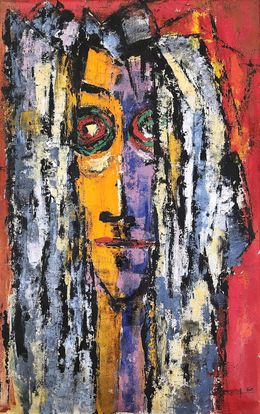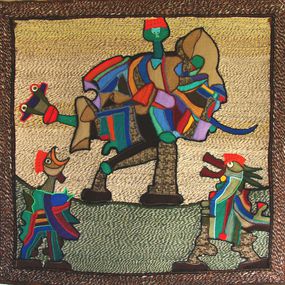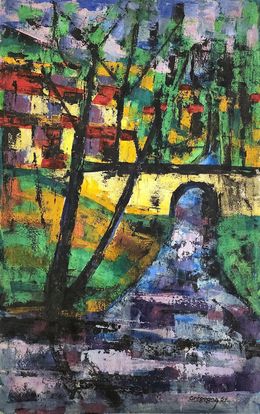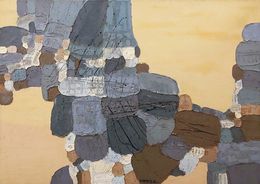
Presentation
Born in 1926 in Hanoi and died in 2011, René-François Grégogna is a French artist.
René-François Grégogna presented his first paintings right after the Second World War in Ales. During late 50s, he moved to Sète. Ten years later, his work "Déjeuner sur l'herbe" was under the limelight, and attracted both positive and negative reviews. His exhibition "Plaider coupable" was a turning point in his career, as he gave up painting and turned towards collages and embossed designs made with worn and recovered elements in landfills.
Late 70's and until mid 80's, René-François Grégogna began a new artistic phase by creating wild and gigantic works, especially the dyke located between Sète and Frontignan which was unfortunately destroyed in 1986.
In 1985, René-François Grégogna created the V.R.A.C movement, which echoed the F.R.A.C. It was also during the 80's that he became known on a world wide basis, with an exhibition in Key West, Florida. He also participated in the Salon de la Figuration Critique at the Grand Palais and organized a collective exhibition in Pezenas, around the figure of Picasso, which was recreated in Paris.
René-François Grégogna is a relentless multidisciplinary artist, who has made use of all the techniques and mediums. His work is still legendary.
Read more
René-François Grégogna presented his first paintings right after the Second World War in Ales. During late 50s, he moved to Sète. Ten years later, his work "Déjeuner sur l'herbe" was under the limelight, and attracted both positive and negative reviews. His exhibition "Plaider coupable" was a turning point in his career, as he gave up painting and turned towards collages and embossed designs made with worn and recovered elements in landfills.
Late 70's and until mid 80's, René-François Grégogna began a new artistic phase by creating wild and gigantic works, especially the dyke located between Sète and Frontignan which was unfortunately destroyed in 1986.
In 1985, René-François Grégogna created the V.R.A.C movement, which echoed the F.R.A.C. It was also during the 80's that he became known on a world wide basis, with an exhibition in Key West, Florida. He also participated in the Salon de la Figuration Critique at the Grand Palais and organized a collective exhibition in Pezenas, around the figure of Picasso, which was recreated in Paris.
René-François Grégogna is a relentless multidisciplinary artist, who has made use of all the techniques and mediums. His work is still legendary.
Discover our selections of works by artists
Need help finding your favorite? Consult our selection pages made for you.
Need to know more?
Who is the artist?
Born in 1926 in Hanoi and died in 2011, René-François Grégogna is a French artist.René-François Grégogna presented his first paintings right after the Second World War in Ales. During late 50s, he moved to Sète. Ten years later, his work "Déjeuner sur l'herbe" was under the limelight, and attracted both positive and negative reviews. His exhibition "Plaider coupable" was a turning point in his career, as he gave up painting and turned towards collages and embossed designs made with worn and recovered elements in landfills.Late 70's and until mid 80's, René-François Grégogna began a new artistic phase by creating wild and gigantic works, especially the dyke located between Sète and Frontignan which was unfortunately destroyed in 1986. In 1985, René-François Grégogna created the V.R.A.C movement, which echoed the F.R.A.C. It was also during the 80's that he became known on a world wide basis, with an exhibition in Key West, Florida. He also participated in the Salon de la Figuration Critique at the Grand Palais and organized a collective exhibition in Pezenas, around the figure of Picasso, which was recreated in Paris. René-François Grégogna is a relentless multidisciplinary artist, who has made use of all the techniques and mediums. His work is still legendary.
What are his 3 main works?
When was René-François Grégogna born?
The year of birth of the artist is: 1926













